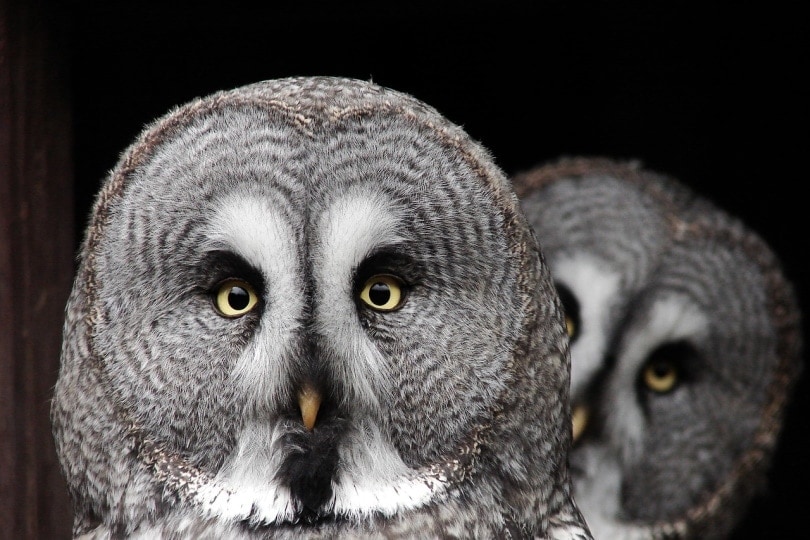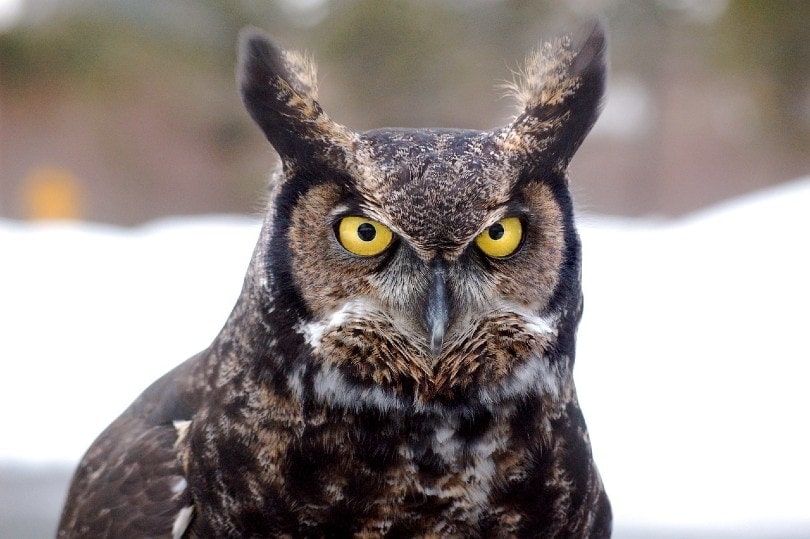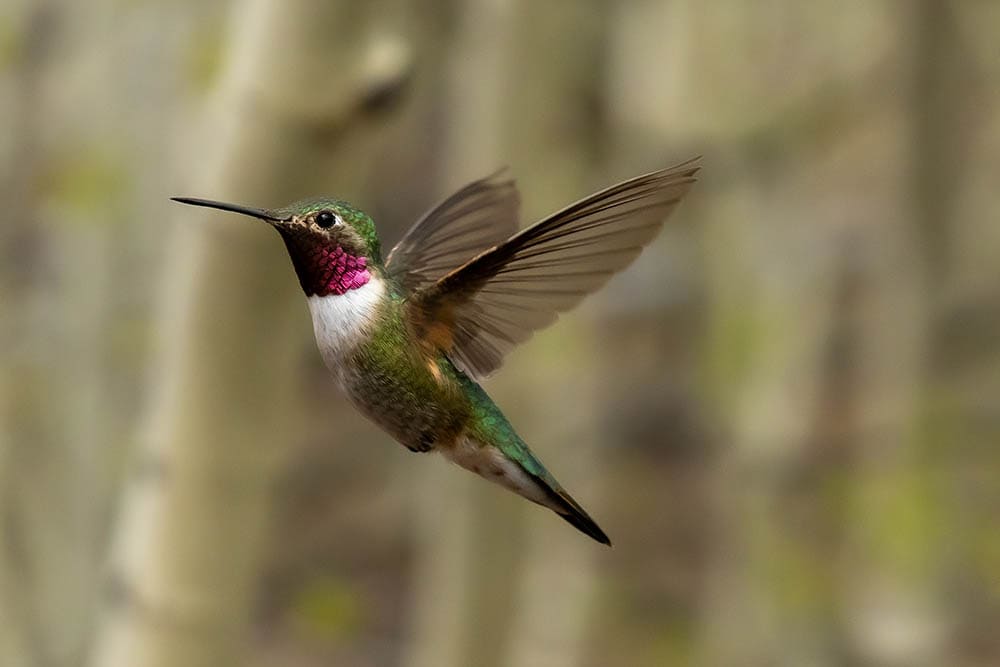Can Birds See Color? Are They Colorblind?
Last Updated on

It may come as a surprise to some people, but along with having keener eyesight than humans, most birds are able to see every color that we can, which is contrary to popular belief. This ability allows them to distinguish different types of food and predators, as well as mate with other birds of the same species.
Studies have shown that some birds are better at seeing colors than others, and the colors a bird sees depend on the type of bird and its environment. Scientists are still trying to understand all the complexities of how birds see color. New research has shown that some birds can even see ultraviolet light, which is invisible to humans. Read on to discover how birds perceive colors and what range of colors they can see.

What Colors Do Birds See?
Most birds can see colors that are beyond the human spectrum, such as ultraviolet light. This is because they have a higher density of cone cells in their eyes than humans do. These cells are responsible for perceiving color and allow birds to see blues, greens, and violets that we cannot. The majority of humans are trichromats, which means that we have three types of cone cells in our eyes that allow us to see a range of colors.
Birds, on the other hand, are most often tetrachromats, which means that they have four types of cone cells in their eyes. This allows them to see a wider range of colors. There aren’t four cones in every bird species’ retinas, but they generally tend to have more than humans and other mammals. Birds can see colors that are outside of the spectrum that humans can see. This includes colors like ultraviolet and infrared.

Which Bird Has the Best Color Vision?
Biologists at Lund University in Sweden have found that the Harris’s Hawk has the best color vision of all animals studied so far, and in some cases, even better than humans. Scientists found that if an object is not clearly distinguished from the background and its color is similar to the background, a bird of prey has a harder time identifying it than a human. However, if the object is of a different color from the background, the Harris’s Hawk can detect it from twice as far away as a human can.
Are Some Bird Species Blind to Certain Colors?
Several bird species have lost the ability to see a single color, which means bird color perception is not as uniform as previously thought. Overall, daytime birds have decent color vision and adequate color discrimination, but they can generalize between similar colors. In natural conditions, the ability of some birds to tell one color from another can be limited by the amount of light and the color of the background around an object.

How Do a Bird’s Eye Cones Work?
The retina of a bird’s eye is specially adapted to perceive spatial information quickly and accurately. Birds have a high concentration of cones in their retinas, especially in the center of the eye where the image is focused. This gives birds superior color vision compared to other animals. Each of the four cone types in the bird’s retina has its own drop of oil, which helps to block certain colors from passing through. The oil is transparent, pale, red, or yellow, enhances the contrast between colors, and helps birds find their prey by filtering out greenery—it can even help them locate deep-sea fish.
The oil droplets are positioned in such a way that they can best block certain colors, depending on the type of bird. For example, parrots have cones with oil droplets that filter out blue light, while eagles have cones with oil droplets that filter out yellow light. Humans, and other mammals, don’t have this oil in our eyes. This is why birds are able to see a wider range of colors than many other animals, as their eyes are better able to filter out different wavelengths of light.
How Do We Know Birds Can See Extra Colors?
We know this because a team of scientists conducted outdoor experiments using sugar water and a pair of custom LEDs programmed to display a variety of colors, including nonspectral colors like ultraviolet+green. The scientists did experiments in a field visited by Broad-Tailed Hummingbirds, setting up two feeders, one with sugar water, the other with plain water.
They placed an LED showing a different color next to each feeder, using tricks to prevent the birds from using location or scent to find the sugar. During a series of 19 experiments, researchers recorded over 6,000 feeder visits, proving that hummingbirds can see a wide variety of nonspectral colors. Hummingbirds could tell ultraviolet+green from pure ultraviolet or pure green and also choose between lighter and darker mixtures of ultraviolet+red light.

Do Daytime Birds Have Better Color Sense?
Daytime birds are more likely to have a better color sense than nighttime birds. This is because many birds use their highly developed color vision to find food during the day, giving them the ability to detect hidden sources of food or predators that are invisible to us. The ability of birds to see different colors is an attribute that has been selected for through natural selection. So, over time, the genes that code for the ability to see more colors have become more common in daytime bird populations.
Are Nocturnal Birds Colorblind?
Nocturnal birds are not colorblind. They have a high degree of visual acuity and color vision, which allows them to see well in low-light conditions. This is important for activities such as finding food and avoiding predators. Nocturnal birds typically have brighter feathers than diurnal birds, which helps them stand out against the darkness.

In Conclusion
In conclusion, the answer to the question “Can birds see color?” is yes. Most birds see the full spectrum of colors that humans can. In addition, birds can see more color than humans, seeing nonspectral colors outside of the range visible to us.
Related Read: How Do Birds Find Bird Feeders? What You Need to Know!
Featured Image Credit: terii2000, Pixabay
About the Author Robert Sparks
Robert’s obsession with all things optical started early in life, when his optician father would bring home prototypes for Robert to play with. Nowadays, Robert is dedicated to helping others find the right optics for their needs. His hobbies include astronomy, astrophysics, and model building. Originally from Newark, NJ, he resides in Santa Fe, New Mexico, where the nighttime skies are filled with glittering stars.
Related Articles:
How to Clean a Refractor Telescope: Step-by-Step Guide
How to Clean a Telescope Eyepiece: Step-by-Step Guide
How to Clean a Rifle Scope: 8 Expert Tips
Monocular vs Telescope: Differences Explained (With Pictures)
What Is a Monocular Used For? 8 Common Functions
How to Clean a Telescope Mirror: 8 Expert Tips
Brightfield vs Phase Contrast Microscopy: The Differences Explained
SkyCamHD Drone Review: Pros, Cons, FAQ, & Verdict
